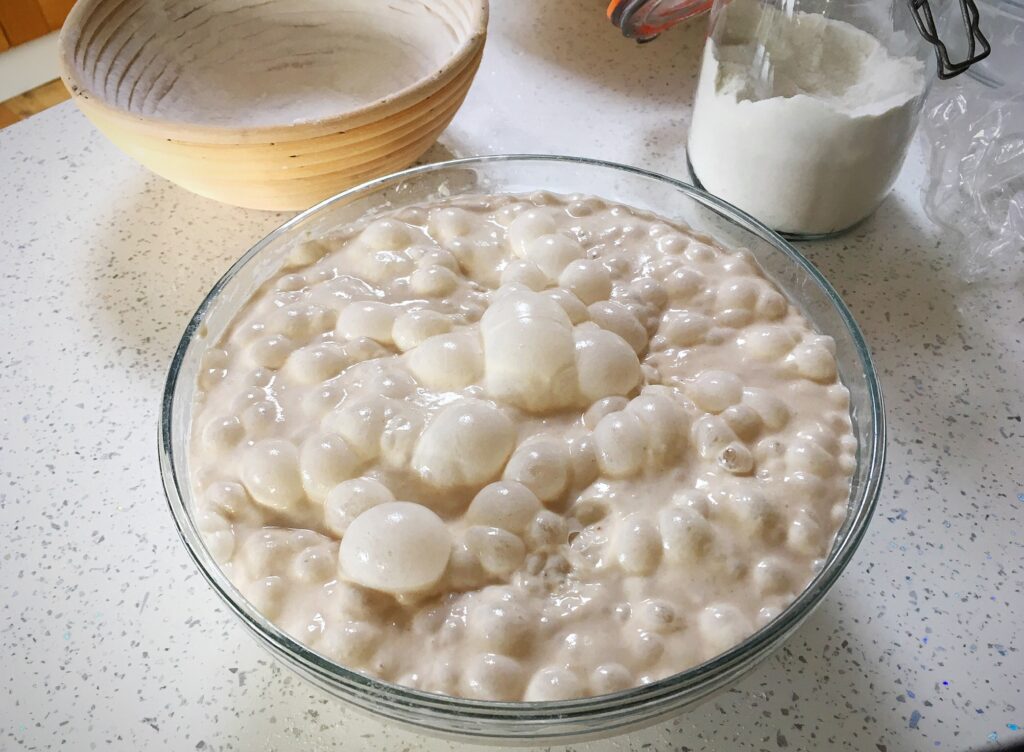
Let’s talk about sticky dough…my top tips:
🌟 if your dough is soft and sticky BEFORE the overnight prove, you probably need less water in your standard dough, or it’s due to the flour/s you’re using (more below);
🌟 if your dough is soft and sticky and impossible to handle AFTER the overnight prove, it’s probably over proved and you need less starter in the dough from the start next time….🌟
Some flours will produce stickier doughs as a standard, for example, an inclusion of a portion of rye flour, malted flour or einkorn flour in your dough will make it stickier, and that’s normal, just go with it and use a bowl scraper to work with the dough if necessary. I have lots of info and tips about these flours, and more, and how they feel and handle in doughs coming in my book. The key in this instance, is not to be concerned.
The time to worry about your dough is when it’s impossible to work with, but that’s all fixable, check out the FAQ page on my site for more help. In the end, all that matters is how the dough bakes; if your loaves are fab, don’t worry about how the dough looks/feels/behaves, just keep doing what you’re doing!
Note: if your dough has over proved it may look bubbly and exuberant like the one in the photo and/or may be impossible to handle and shape, in this case, use it to make focaccia 🌟🌟🌟 method in the recipe index on my site…ps this dough was fine, it’s just a flour that likes to bubble 🤩🤩
